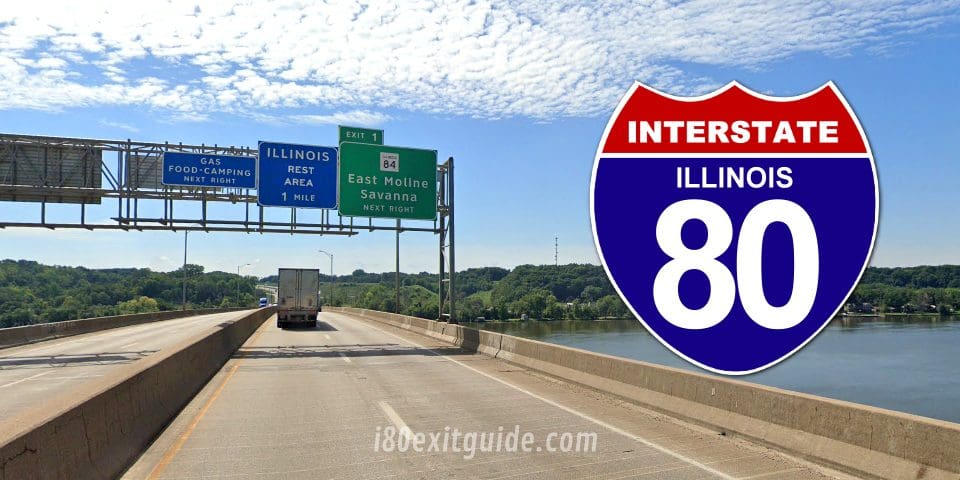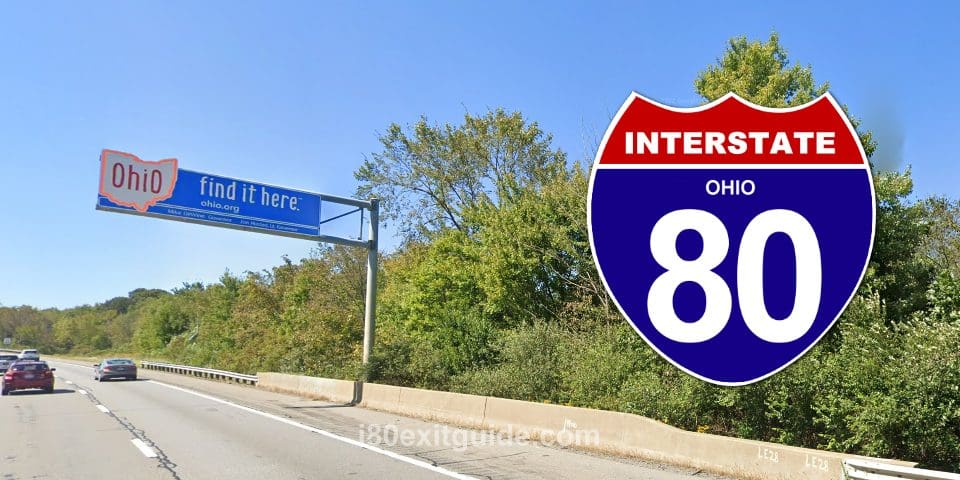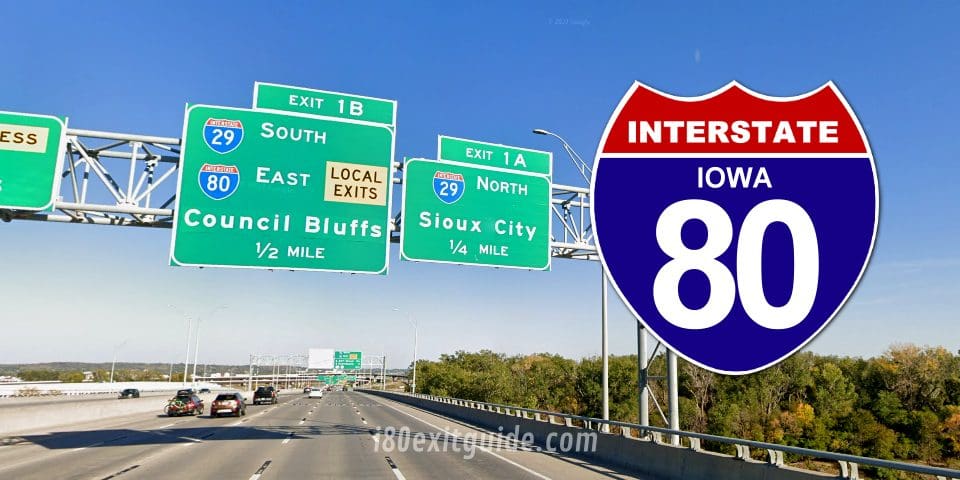Illinois I-80 Fast Facts
Total Illinois I-80 Miles: 164 miles
Total Illinois I-80 Driving Time: 2 Hours, 26 Minutes
Major Cities Along the Way: Peru, Ottawa, Joliet
Navigating Interstate 80 Through Illinois
Route Overview
Stretching approximately 160 miles across northern Illinois, Interstate 80 serves as a key artery in your cross-country journey. From the Mississippi River at the Iowa state line near Rapids City, the route carries you through a dynamic mix of scenic farmland, bustling suburbs, and industrial hubs before crossing into Indiana at the eastern border. You will find yourself traversing counties like Rock Island, La Salle, and Will, each offering unique landscapes and local charms. The stretch between Interstate 88 and Interstate 57 is particularly notable for its blend of heavy truck traffic and commuter vehicles, reflecting its role as both a freight corridor and a daily commuter route.
Your drive along I-80 in Illinois will typically take around two and a half to three hours under normal traffic conditions, with speed limits mostly set between 65 and 70 mph. Although the route is generally straightforward, watch for key interchanges near cities like Joliet and the metropolitan Chicago area where congestion peaks during rush hours. Several rest stops and service plazas are strategically placed along the way, providing opportunities to refuel, refresh, and grab a bite. Complementing the major interstates, auxiliary routes such as I-280 and I-355 can offer scenic or quicker bypasses depending on your destination within the region.
I-80 IllinoisNavigating the I-80 Corridor: A Comprehensive Journey
Route Overview: Mileage, Exits, and Landmarks
The stretch of I-80 running through Illinois covers approximately 169 miles, making it one of the key east-west routes in the state. Depending on traffic, it takes roughly two hours and 45 minutes to traverse this corridor without stops. Your journey begins near the Mississippi River at the Iowa border, continuing eastward until it exits into Indiana. Major exits include those serving the Quad Cities area at Moline and Rock Island, as well as the Joliet region farther east, offering access to various urban centers and suburban neighborhoods.
Several prominent landmarks accompany this drive, providing orientation points and opportunities to break your trip. You’ll pass near the historic Route 66 corridor around Joliet and see signs for the Interstate 55 interchange, a major north-south artery. The Illinois and Michigan Canal National Heritage Corridor lies just south of the highway, hinting at the area’s rich transportation history. With frequent rest stops and commercial areas, you’ll find plenty of places to refuel both your vehicle and yourself along the way.
Key Features: Scenic Views and Unique Stops
Driving through the Illinois section of I-80, you’ll encounter more than just miles and miles of road. The landscape shifts from the agricultural flatlands to patches of woodlands, especially near the Des Plaines River and some of the forest preserves west of Chicago. Scenic overlooks are rare but notable at areas near the Rock River. Additionally, multiple state parks lie within a few miles of the corridor, offering hiking or picnic options if you need a stretch.
Unique stops enrich this route, catering to travelers looking for experiences beyond the standard interstate amenities. Small towns like Wilmington and Ottawa are known for their charming downtown districts, local diners, and historical sites such as the Illinois and Michigan Canal Museum. The Chicago metropolitan area is imminent as you approach the eastern terminus, where urban attractions and a variety of cultural institutions await if you decide to extend your journey.
- Quad Cities area offering scenic river views and historic downtowns
- Multiple state parks close to I-80 including Buffalo Rock State Park for hiking and birdwatching
- Historical sites like the Illinois and Michigan Canal National Heritage Corridor near Ottawa
- Rest stops equipped with modern facilities approximately every 30 miles
- Shopping outlets and local dining options near major exits such as Joliet
- Transition zones offering views from rural farmland to urban skylines
After passing through these varied environments, the character of the corridor transitions subtly, providing a narrative of Illinois’ geographic and cultural diversity. This allows you not only to move efficiently across the state but also to immerse yourself in distinct settings along the way.
Further exploration of key features reveals the contrast between natural beauty and developed areas along I-80. You can pull off near the Rock River to admire waters edged with trees and wildlife or visit small towns that celebrate Illinois history with museums and preserved architecture. In addition, the corridor is dotted with modern service centers that accommodate the needs of long-distance travelers with fuel, food, and rest areas.
- Proximity to Rock River and Mississippi River for outdoor activities
- Small town cultural hubs like Ottawa and Wilmington with historical museums
- Convenient access to local farmers’ markets and artisan shops in several towns
- Well-maintained rest areas featuring pet exercise zones and scenic picnic spots
- Controlled access points to major local roads easing detours and sightseeing
- The gradual urban expansion upon nearing Chicago, offering diverse eateries and accommodations
After experiencing these features, you gain a richer impression of how I-80 serves as a gateway not only across Illinois but also into its natural beauty and local heritage, making the corridor a multifaceted route for every traveler.
Heartbeat of Illinois: Major Cities Along the Route
The stretch of I-80 through Illinois serves as more than just a highway; it connects several thriving cities that contribute significantly to the state’s economic and cultural landscape. These urban hubs are dotted along the route and offer a mix of historical significance, industry, and community life that shape your driving experience. Each city presents unique attractions and opportunities to explore, break up your journey, or dive deeper into local culture and history.
From bustling intersections to riverfront views, the cities along I-80 provide both logistical advantages for travelers and insights into Illinois’ diverse character. Rather than rushing through, these destinations present chances to withdraw from the highway for brief yet enriching pit stops that highlight industry, heritage, and contemporary life.
Joliet: The Crossroads of I-80 and I-55

Joliet stands out as a major logistical hub where two significant interstate highways, I-80 and I-55, intersect. This city offers you a strategic rest point with a range of amenities, from modern shopping centers to an array of dining options. Beyond its role as a crossroads, Joliet is rich in history, featuring attractions such as the Joliet Area Historical Museum and the Rialto Square Theatre, both reflecting the city’s vibrant past and cultural scene.
If you’re driving through, Joliet also provides evidence of Illinois’ industrial roots with its ongoing role in transportation, warehousing, and manufacturing sectors. The city’s proximity to Chicago further positions it as an accessible urban destination without the density of a major metropolitan center, giving you a more relaxed but equally interesting stopover.
Ottawa: Rich History Meets Modern Convenience
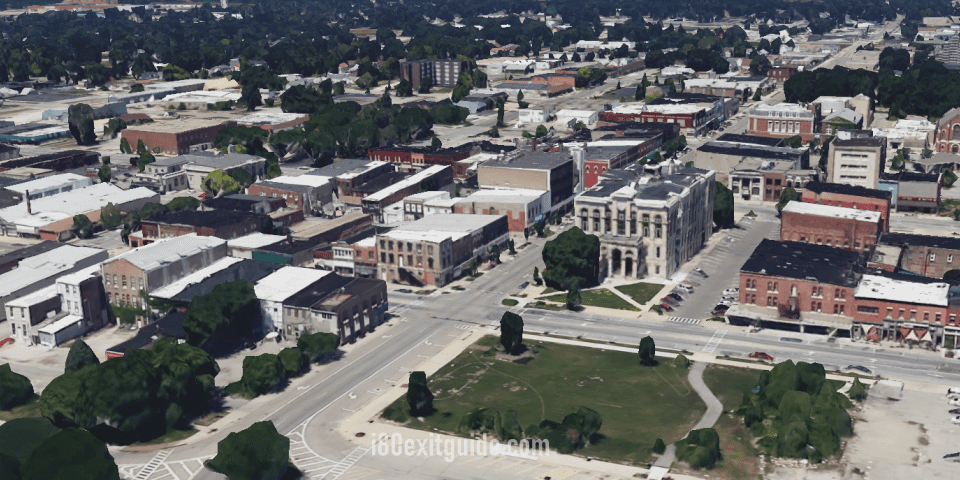
Ottawa, located along the scenic Illinois River, merges historical significance with contemporary offerings. Its location along I-80 allows you to easily explore a city that played a pivotal role in the Underground Railroad and served as the site of Illinois’ first railway bridge. Driving through, you’ll notice a well-preserved downtown district that blends quaint boutiques, eateries, and cultural venues, making it an engaging stop that balances history with today’s conveniences.
Several museums and parks are within easy reach here, providing opportunities to stretch your legs and probe local heritage. The city’s role in both commerce and conservation reflects Illinois’ dual commitment to economic progress and natural beauty along this route.
Additional interests in Ottawa include the charming annual events like the Route 66 Festival, reflecting the city’s ties to famous American roadway culture. You’ll also find well-marked bike trails and riverfront paths, inviting outdoor exploration right off the interstate corridor.
Peru: Industrial Heart Land with Natural Attractions
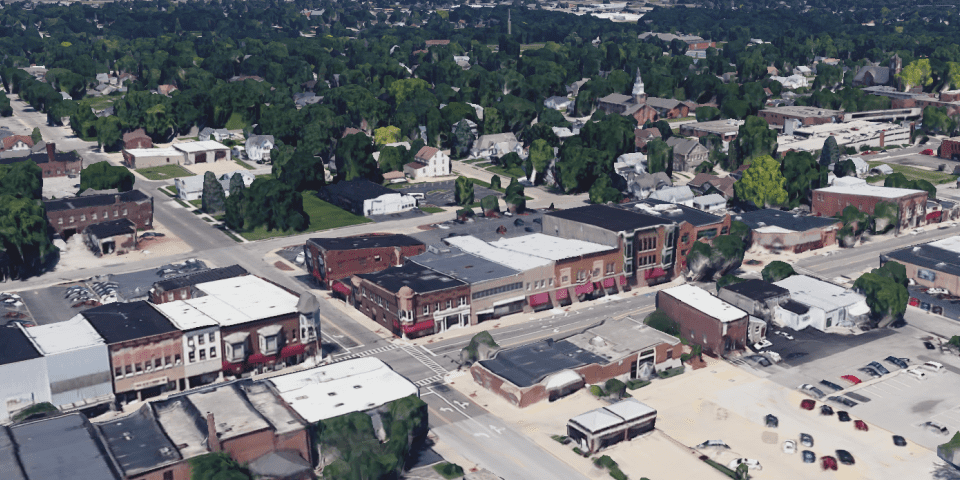
Peru presents a striking blend of heavy industry and natural beauty just off I-80. Known historically for its manufacturing and heavy equipment plants, you’ll observe the lasting imprint of industrial innovation alongside accessible riverside parks. The Illinois River’s proximity offers enjoyable breaks in your drive with recreational activities like fishing and boating, balancing urban industrial activity with outdoor relaxation.
As you continue your journey, the city’s vibrant local festivals and riverside venues invite you to engage with both community culture and scenic views. The Peru economy has diversified, yet it remains anchored in legacy industries, giving you a layered perspective on Illinois’ work ethic and lifestyle along the highway.
Local points of interest such as the annual Canal Days Festival celebrate the city’s historical linkage to canals and the river, providing you a glimpse into Peru’s unique identity nestled between industrial progress and natural tranquility.
Maximizing Your Drive: Essential Driving Tips for I-80
Traveling I-80 across Illinois demands a strategic approach to make the most of your journey. The highway stretches approximately 150 miles within the state, and under ideal conditions, you can expect to cover this distance in about two and a half hours. To optimize your drive, plan rest stops at well-equipped service areas, such as the ones near the Quad Cities and Joliet, where you can refuel and grab a quick bite without straying far from the route.
Illinois I-80 exit services (food, gas, and lodging) located within 1/2 mile of an I-80 exit are listed here. These listing run east to west. Individual exits show intersecting routes and cities and towns accessible from that exit.
Maintaining steady speed and minimizing lane changes can help conserve fuel and reduce travel stress. Use cruise control where safe and legal, especially on long straight stretches. Perceiving the rhythm of traffic flow and responding smoothly to changes will keep your drive efficient and more enjoyable.
Timing Your Journey: Best Times to Travel
Setting off during off-peak hours can greatly enhance your driving experience on I-80 in Illinois. Early mornings on weekdays, before 7 AM, generally see lighter traffic, letting you breeze through urban bottlenecks near Aurora and the I-294 interchange. Conversely, late evenings after 8 PM often bring similar benefits but may require more caution due to reduced visibility.
What’s happening on Interstate 80 RIGHT NOW! I-80 Real-Time Traffic information for cities along I-80. Maps show updates on road construction, traffic accidents, travel delays and the latest traffic speeds. Traffic cameras show congestion at a glance. DOT posts bring the latest incidents and their status. Road News includes related I-80 articles. Data is automatically updated every 5 minutes, 24 hours a day, 7 days a week!
Weekends, especially Sundays, tend to be less congested in the mornings but can become busy in the afternoon as travelers return home. Holidays and peak travel weekends, such as Labor Day or Memorial Day, frequently experience heavier traffic with delays around major urban centers. Perceiving these trends allows you to schedule your trip to avoid unnecessary stops and enjoy smoother transit.
Safety Considerations: Weather and Road Conditions
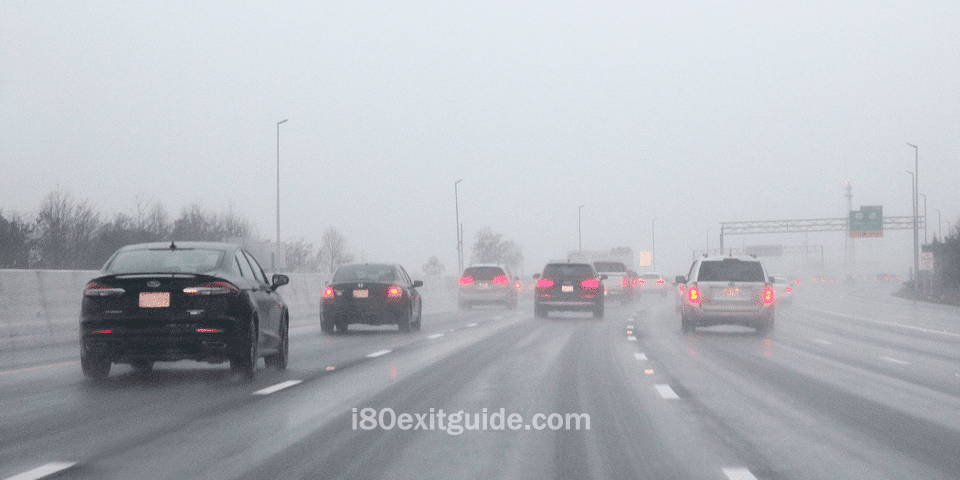
Illinois weather can be highly variable, affecting conditions on I-80 throughout the year. Winters bring snow and ice, particularly between December and February, which demand reduced speeds and greater following distances. Pay close attention to alerts from the Illinois Department of Transportation, which often deploys plows and salt trucks during storms to maintain driveability.
Planning an I-80 road trip and need to know what the next few days will bring? Here are the latest I-80 weather forecasts for selected cities along the route.
Spring and fall can introduce heavy rain and fog, reducing visibility and road traction. Water accumulation in low-lying areas sometimes leads to flooding, most notably near the Illinois River crossings. Adjust your driving by slowing down and using headlights to increase safety margins in these conditions. Perceiving the subtle changes in weather and road surface can prevent accidents and ensure steady progress.
Bridges and overpasses along I-80 require particular attention during cold spells, as they tend to freeze before other road sections. Checking real-time road condition updates via apps or traffic radios can inform you of any closures or hazards ahead, empowering you to make timely decisions.
Navigating Toll Roads: Fees and Alternatives
Driving I-80 in Illinois involves encountering toll plazas, especially as you pass through sections operated by the Illinois State Toll Highway Authority. Toll rates vary based on vehicle type and distance, with a typical passenger car paying between $5 and $12 for traversing the entire Illinois portion. Make sure your payment method — whether I-PASS, E-ZPass, or cash — is ready to avoid delays.
If looking to avoid tolls, consider parallel routes like US Route 30, which runs close to I-80 and offers a toll-free alternative. Though it may add several minutes to your journey, this option provides a more scenic drive and less pressure during peak travel. Perceiving whether time savings overshadow potential cost advantages helps tailor your route to your specific preferences and schedule.
For frequent I-80 travelers, investing in an I-PASS or compatible transponder can significantly reduce toll costs and shorten waiting times at toll booths. Many gas stations and online vendors offer these devices, which also grant access to discounted rates on Illinois tollways, offering both convenience and savings over time.
Illinois’ I-80 In a Nutshell
Hence, driving I-80 in Illinois offers you a convenient and efficient route that spans approximately 160 miles across the northern part of the state. With an estimated driving time of around 2.5 to 3 hours, this interstate connects you to key cities and important transportation hubs, making it a valuable corridor for both daily commutes and long-distance travel. You’ll find a mix of urban and rural landscapes, with various services and amenities available along the way to support your journey.
By using I-80, you can navigate Illinois with confidence, taking advantage of its well-maintained infrastructure and strategic location. Whether you are passing through or making stops, the route provides straightforward access to other major highways, ensuring your travel plans remain flexible and manageable. Your experience on I-80 will be streamlined, allowing you to focus on your destination with ease and reliability.
The I-80 Exit Guide is the Internet’s largest and most complete website dedicated to Interstate 80 travelers. Find detailed exit service listings… lodging, camping, food, gas and more for every exit from New Jersey to California!
On the road? Why not take us with you. The I-80 Exit Guide is mobile-friendly and totally FREE. No App Required.
Traveling another route? Visit our growing family of exit guides: I-4 Exit Guide, I-5 Exit Guide, I-10 Exit Guide, I-75 Exit Guide, I-80 Exit Guide and I-95 Exit Guide. Detailed exit service listings… discount lodging, camping, food, gas and more for every exit along the way!

